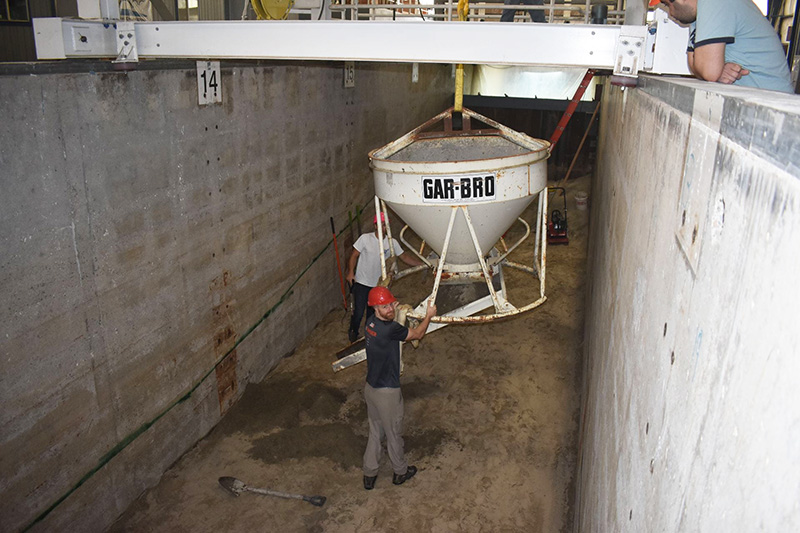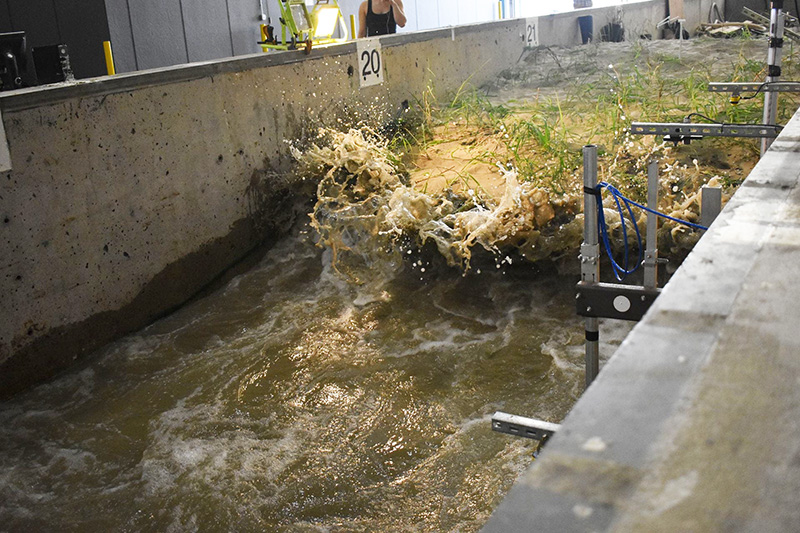With findings in contrast to long-held paradigms, new data from large-scale laboratory experiments could influence future coastal engineering projects.
In a new study published in Science Advances, researchers found that newly planted vegetation can accelerate erosion of coastal sand dunes by extreme waves and storms.
These findings run counter to the long-held paradigm that vegetation reduces dune erosion landscapes by acting as a first line of defense for these ecologically important and economically valuable landscapes. The results could have implications for future coastal engineering and remediation projects.
The study was led by Rusty Feagin from Texas A&M University and was conducted at the O.H. Hinsdale Wave Research Laboratory at Oregon State University. Additional collaborating institutions include the University of Delaware and the Universidad Nacional Autonoma de Mexico.
From UD’s College of Engineering in the Department of Civil & Environmental Engineering, professor and department chair Jack Puleo, Ph.D. student Benjamin Tsai and recent Ph.D. graduate Maria Pontiki were involved with this research. Puleo was the lead PI of the NSF-funded project “Physics of Dune Erosion during Extreme Surge and Wave Events” and responsible for overall experiment coordination.

Beach profile installation (Image courtesy of Jack Puleo’s lab)
Laboratory experiments involved building beach dunes that were 70 meters long and 4.5 meters high and subjecting them to storm waves in a 104-meter-long flume. The researchers spent six months growing coastal switchgrass (Panicum amarum) within the flume before beginning wave testing.
“The work was unique in that our collaborators sought to establish early root formation through in situ plant growth,” said Puleo. “Most prior studies would have grown the plants offsite, bored holes in the dune, and emplaced the plants. Our approach was an improvement but still requires future refinement through additional growth time. Now, we seek to determine if the negative effects of the plants on dune viability wanes with more established root structure.”
This research was funded by the National Science Foundation (grants 1756477, 1519679, 2037914, 1756449, 1756714, the National Institute of Food and Agriculture (grant TEX09138) and National Aeronautics and Space Administration (grant 80NSSC21K0685).
Portions of this text were adopted from a press release by Oregon State University.
This study was also highlighted in Science News.

